Anon M4 Goggle
Lenses Tested:
- Sonar Bronze (cylindrical) — 19% VLT
- Sonar Blue (cylindrical) — 46% VLT
- Sonar Infrared (toric) — 57% VLT
- Sonar Night (toric) — 77% VLT
Stated Features:
- Includes Spare Lens Color
- Includes MFI Facemask
- Includes Lens Compression Case
- Includes Microfiber Goggle Bag
- Outlast® Fog Management Face Fleece
- Magna-Tech® Quick Lens Change Technology
- SONAR Lens Technology Featuring Zeiss
- Frame Height: 103mm
- Lightweight Dual Molded PC-ABS/TPU Frame
- Wall-to-Wall Vision
- Triple Layer Face Foam
- No-Slip Silicone Strap
- Over The Glasses (OTG) Compatible
- MFI® Technology (Magnetic Facemask Integration)
- Full Perimeter Channel Venting
MSRP: $299.95
Test Locations: Crested Butte & Arapahoe Basin, CO
Days Tested: ~20
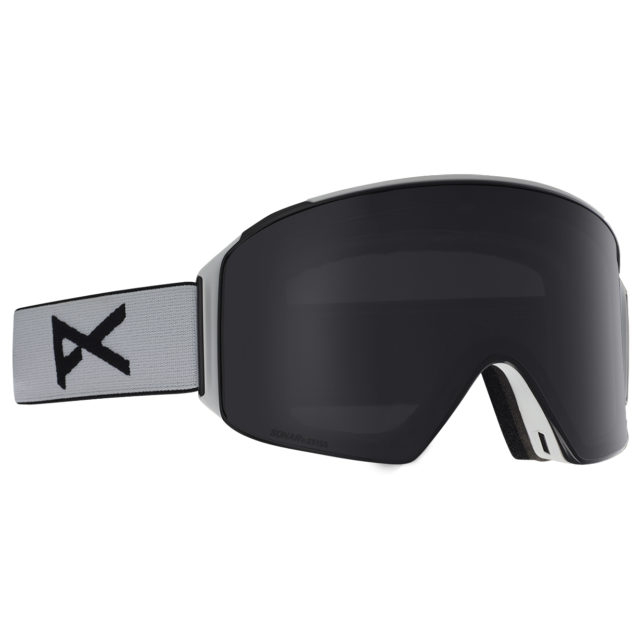
Intro
If you’ve read any of our reviews of Anon’s goggles, or checked out our Buyer’s Guides, you’ll know that we’re big fans.
Why? Because they have the quickest and easiest lens-swap system of any goggle we’ve used.
Since the original Anon M1 was released, they’ve expanded the line to include the larger M2, cylindrical M3, women’s WM1, and this year, they added the M4.
The M4 is unique for a few reasons, most notably that it accepts both cylindrical and toric-shaped lenses (toric lenses are similar to spherical lenses). That means that the M4 could be the solution for people who want a super easy lens-swap system, but who also want more versatility and lens options. So, is the M4 just as impressive as Anon’s other goggles?
Fit
The M4 is a big goggle — the biggest in Anon’s lineup. The M4’s frame is 103 mm tall, compared to the M2’s 96 mm, and the M3’s 93 mm.
Compared to goggles from other brands, the M4 is still pretty dang big. It’s comparably sized to the POC Orb Clarity, which is one of the biggest goggles I’ve used. Compared to the Giro Axis, Smith I/O7, and Spy Ace EV (review coming soon), the M4 is notably larger overall.
I have a giant head, so I love the fit of the M4. It wraps around my face comfortably with no gaps, and I think it looks pretty awesome. But those with smaller faces should probably stick to the WM1, M2, or M3.
Lens Swapping
Just like Anon’s other goggles, the M4’s lens-swap system is incredibly easy and quick. It uses eighteen very strong magnets to secure the lens to the frame, and you can remove the lens by pulling on any of the four raised edges on the corners of the goggle.
To give you an idea of how strong the M4’s magnets are, I tried (for experimental purposes only) throwing one of the M4’s lenses at my face while wearing the frame, and did get it to stick several times. I wouldn’t recommend that you do this every time, but yeah, the magnets are really strong. And after my many tumbles in the M4, I still haven’t had one of its lenses pop out unexpectedly (which did happen with the Giro Axis during a particularly brutal tomahawk).
All in all, the M4 has the easiest lens-swap system I’ve ever used, and I also love that I can change lenses while wearing it under a helmet.
Lenses
Beyond being the largest goggle in Anon’s lineup, the M4 is also the only one that accepts both cylindrical and toric lenses. The cylindrical lenses are only curved horizontally, while the toric lenses are curved both horizontally and vertically. However, the toric lenses aren’t quite spherical — the curve on the vertical axis is a bit flatter than that on the horizontal axis (like a cross-section of a donut). Anon says this is designed to mimic the shape of the human eye, and provide better ventilation and peripheral vision.
Some people say that they notice more peripheral distortion with cylindrical goggles, but I have never personally had an issue with this on the Giro Axis or the M4’s cylindrical lenses. And since I love how cylindrical lenses look, that’s what I prefer. But the M4 gives you the option of switching between toric and cylindrical lenses, which is a nice option to have.
And in terms of the difference between toric and spherical lenses, I haven’t noticed any difference in the optical quality.
I had a chance to use four of the M4’s Sonar Zeiss lenses (two cylindrical, and two toric). Overall, the optical quality seemed excellent and on-par with all other high-contrast lenses like Giro’s Vivid series.
Sonar Bronze (cylindrical) — 19% VLT
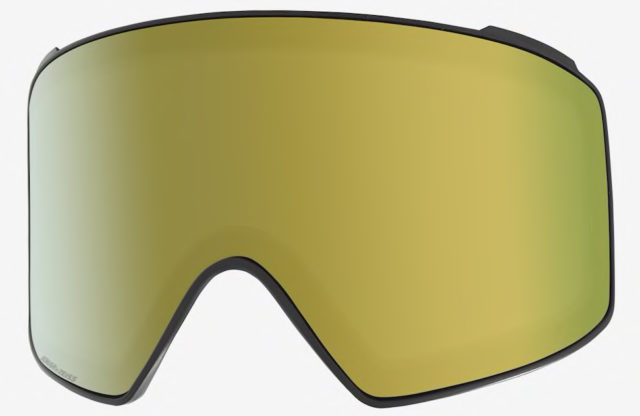
This is the lens I’ve been using most often in Colorado. It’s plenty dark for the brightest bluebird days, but it still offers pretty good contrast so that I’m comfortable using it when the skies are anywhere from crystal clear to partly cloudy.
Sonar Blue (cylindrical) — 46% VLT
This lens is great for overcast and pretty low-vis days. It filters enough light that I’m not squinting in agony when the sun occasionally breaks through the clouds, but lets enough light through that I’ve been happy using it on all but the darkest of storm days (where I’ll use one of the next two lenses).
Sonar Infrared (toric) — 57% VLT
While I’ll use the Sonar Blue lens for days when I might see a bit of sun, I break out the Sonar Infrared solely for fully overcast days. Like all the Sonar lenses, the Infrared offers excellent contrast, and I’ll use it for all days where I’m lucky enough to be skiing in a storm.
Sonar Night (toric) — 77% VLT
This lens is unsurprisingly very good for skiing in the dark, but it’s also an excellent storm-day lens. It does a great job of brightening up the terrain and increasing contrast, and should be on your list if you find most low-light lenses to still be too dark.
Fogging
I haven’t had any unordinary issues with the M4 fogging up. I can’t wear it for very long while skinning or hiking, but I’d say the same for every other goggle I’ve used. No complaints here.
Field of View
It’s really, really big. Beyond making me look rad, the other upside to the M4’s massive frame and lenses is that it offers nearly unrivaled field of view. The POC Orb Clarity is the only other goggle I’ve used that offers a similarly giant field of view, but I much prefer the look and lens-swap system of the M4.
Helmet Compatibility
The M4 is curved on the top of the frame, so it works best with helmets with brims that match that curvature. It lines up well with the Giro Combyn, POC Auric Cut Backcountry SPIN, and Sweet Protection Switcher, but leaves a bit of a gap on the sides when worn with the old Salomon Hacker, which had a pretty flat brim.
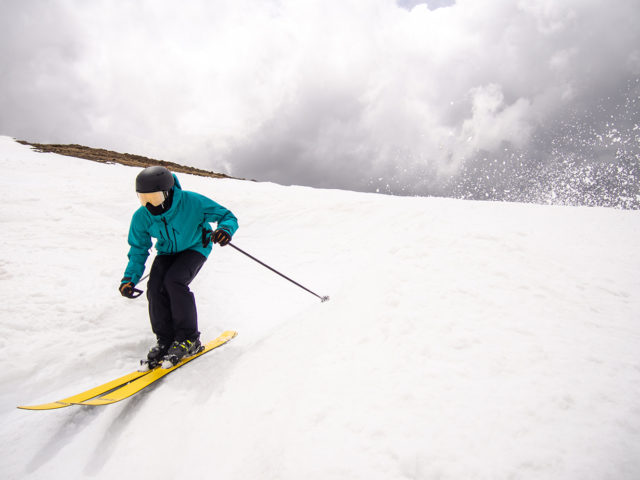
All in all, I’d say the M4 works with a pretty wide range of helmets, just note that you might have some gaps on the sides if your helmet has a very flat brim. If you want a goggle with a flatter top, check out the Anon M3.
Magnetic Face Mask
The M4 comes with Anon’s magnetic face mask, which attaches to the magnets on the bottom of the M4’s frame.
The magnetic attachment is awesome, and creates a nearly seamless closure across my face.
I tested the Midweight MFI face mask, which uses a pretty dense softshell material. I like it for really cold days, but would opt for the Lightweight or Tech versions for when it’s warmer than around 15°F, as the Midweight face mask can cause a bit of fogging when it’s not very cold.
Lens Cases
This isn’t all that important, but I just wanted to applaud Anon for including excellent lens cases. The M4 comes with two lenses, and the spare lens comes in a hard case that helps protect the lens from scratches, drops, and bumps, and it also has an elastic closure that keeps it from opening. For a goggle that costs as much as the M4 (see below), it’s nice to see that the M4 doesn’t come with a super cheap lens case.
Durability
I put one scratch on the Bronze lens of the M4, which makes me really sad cause that’s my favorite of the four lenses I have for the M4. But that scratch was the result of my smacking my face into the snow at A-Basin in late spring, which basically looked like cookies and cream ice cream due to all the little pebbles littered everywhere. So I wouldn’t expect any other lens to have held up better.
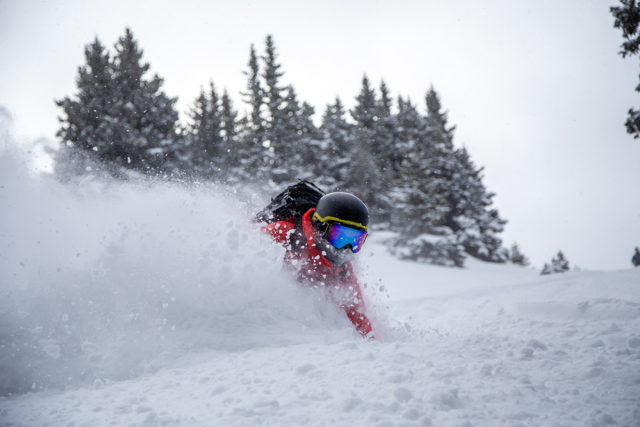
Apart from that scratch (which, again, was my fault), the M4 is still functioning perfectly. I’ve had no issues with the strap, and the lens-swap magnets are still feeling super strong.
Price
Here’s where I can’t exactly gush about the M4. At $299, it’s one of the most expensive goggles on the market. That price does include two lenses and a magnetic face mask, but it’s still a lot of cash for a goggle.
While I do think the M4 is a product where its performance matches its price, I think plenty of people would be better off with a cheaper goggle. If you want a cylindrical goggle with a quick magnetic lens-swap system that’s much cheaper, I’d check out the Giro Axis.
Bottom Line
The Anon M4 is an extremely impressive goggle. It works with cylindrical and toric lenses, the lens optics are excellent, it offers an excellent field of view, and it has the best lens-swap system we’ve ever used. If it fits your budget and your face, I highly recommend the Anon M4.

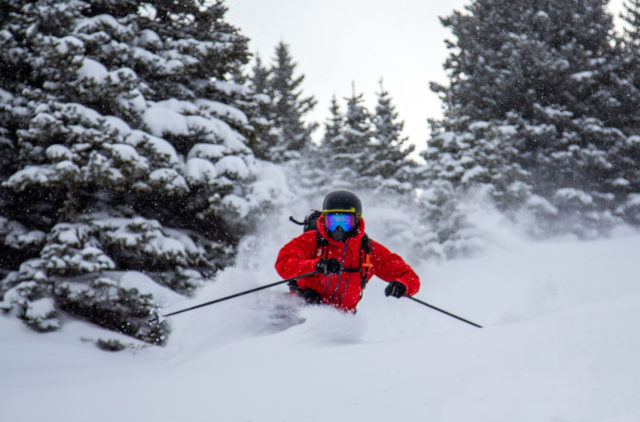
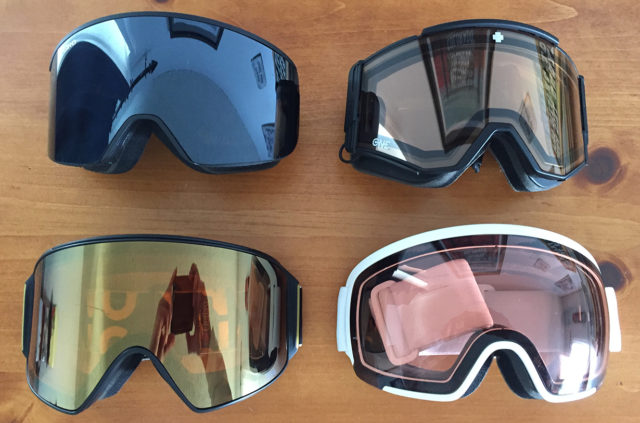
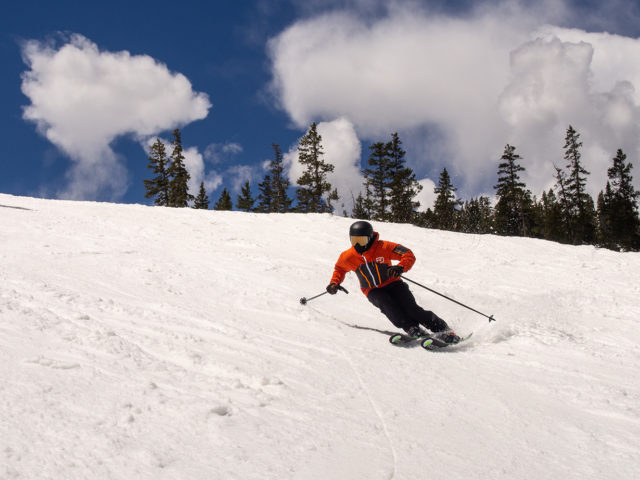
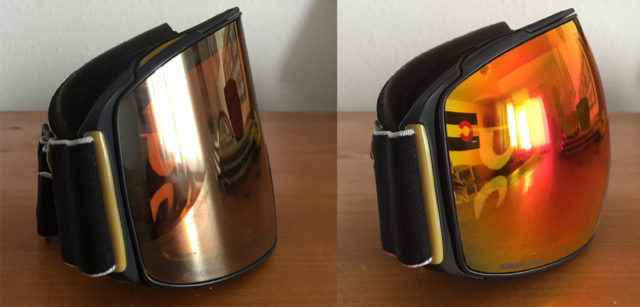
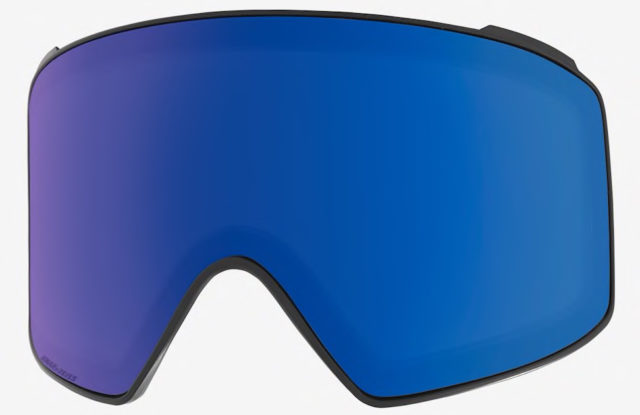
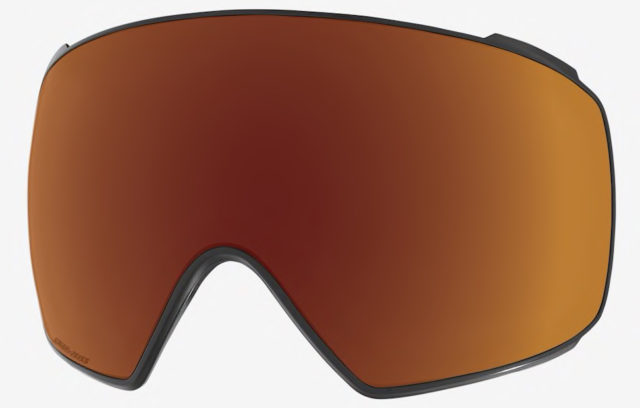
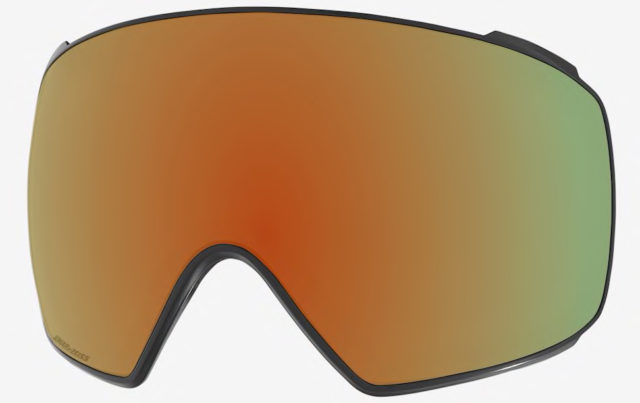
I’ve noticed over the years, you guys haven’t compared Oakley goggles to these. How would you compare to the Flight Deck? Or is Oakley really just a ton of marketing and fluff?
I know the Infrared is better for storms, but is the Sonar Blue that much worse that you would spend the money for a third lens?
I had to return 2 pairs of m2s because the lens would open away from the frame at the bridge of the nose if the straps are pulled sideways. The outsiders do not function as such at all on the m2. Can you confirm if the same fault is present on these m4s ? I don’t have a retailer near me where I can try this for myself.
About “Helmet Compatibility” you write: “It lines up well with the Giro Combyn, POC Backcountry SPIN, and Sweet Protection Switcher”. About what POC helmet you are writing? “Backountry SPIN” is just a variation of some POC Helmet model, for example “POC Auric Cut Backcountry SPIN”. Have you tried the goggle in person with some POC helmet? What model and size please? I use a M2 with an Auric Cut Backcountry SPIN M/L and I’m trying to figure if also the M4 fit well. Thanks
Sorry for the lack of clarity — the helmet I was referring to is the Auric Cut Backcountry SPIN. I used the size XL/XXL Auric Cut Backcountry SPIN helmet and it worked well with the M4 goggles. I imagine it’d work well with other sizes of the helmet as the goggle’s upper edge lines up almost perfectly with the brim of the helmet.
Anyone else had similar issues as I have?
The M4 toric presses more into the bones under my eye than the previous model, I’ve actually had several people on the mountain say they have the same discomfort and poor fit over previous models.
And the face mask internal wire or plastic broke at the nose.
I wore my M2s for years, missing them now.
I’ve had two pairs of M2s over the last two seasons, and each spring I’ve found on warmer, humid days the lenses fog up to the point where they were unusable. After a warm spring day at Red Mountain last year, both lenses fogged, so I returned them and got another pair. Then on a spring day at Snowbird last month, the same thing happened. I had to put the goggles on my head and ski in sunglasses.
Has anyone else had this problem?
Yes – I had terrible fogging issues with my M2’s having been stranded in a storm at Winter Park last year. I love the goggles though, so I wrote Burton and they sent me a new replacement pair. The Burton rep said this is sometimes an issue with the M2’s and it seems to be a manufacturing flaw. I haven’t gotten the new pair out on the snow yet and am hopeful they will not have the same flaw.
Do you think a combo of the Sonar Bronze and Sonar Infrared is sufficient or would you recommend having a third or fourth lens?
Thank you.
For me, the Bronze + Infrared or even Bronze + Blue were totally adequate for the complete range of light conditions I typically experience over the course of a season.
Excellent info. It’d be great if one pair of $$$ goggles could cover all situations: (1) Offer low-light contrast for dark & stormy days (57% Sonar Infrared or 46% Sonar Blue?), (2) your average Colorado winter day with a little bit of every kind of light with minimal fuss (19% Sonar Bronze?), (3) mid-day hot-sun glacier travel (7% Sonar Smoke). But the goggles are sold with only two lenses, not three, so what compromise would you start with? Also, mid-day glacier travel is sooo very brutal, I’m wondering if a pair of low-profile sunglasses (like Bucci Barracuda) would fit inside to layer up?
I’m stuck between this and the 4D Mag, I don’t have that big of a face since I’m only 15. I have money for both but I just don’t know what one to get I’ve narrowed it down to those 2 though. The lens swaps, and face mask seem like the M4 is a good pick. But also the lens swaps, Lens, extra FOV make the 4D seem good
I have the exact same dilemma right now. Unfortunately Blister hasn’t done any comparisons on Perceive vs Chromapop or done anything on the Smith Photochromic lenses which is where I’m getting really stuck. Not sure if the FOV and mask are worth the M4 or if the colors and photochromic make the 4D Mag or IO XL better.
I have enjoyed using The M2,s for a few seasons now and find them excellent, the only frustration being with the MFI Face mask, I replaced it 3 times due to the nose piece connector breaking in exactly the same spot, an excellent mask when working, unfortunately I have now given up on replacing it due to the obvious flaw in the design.